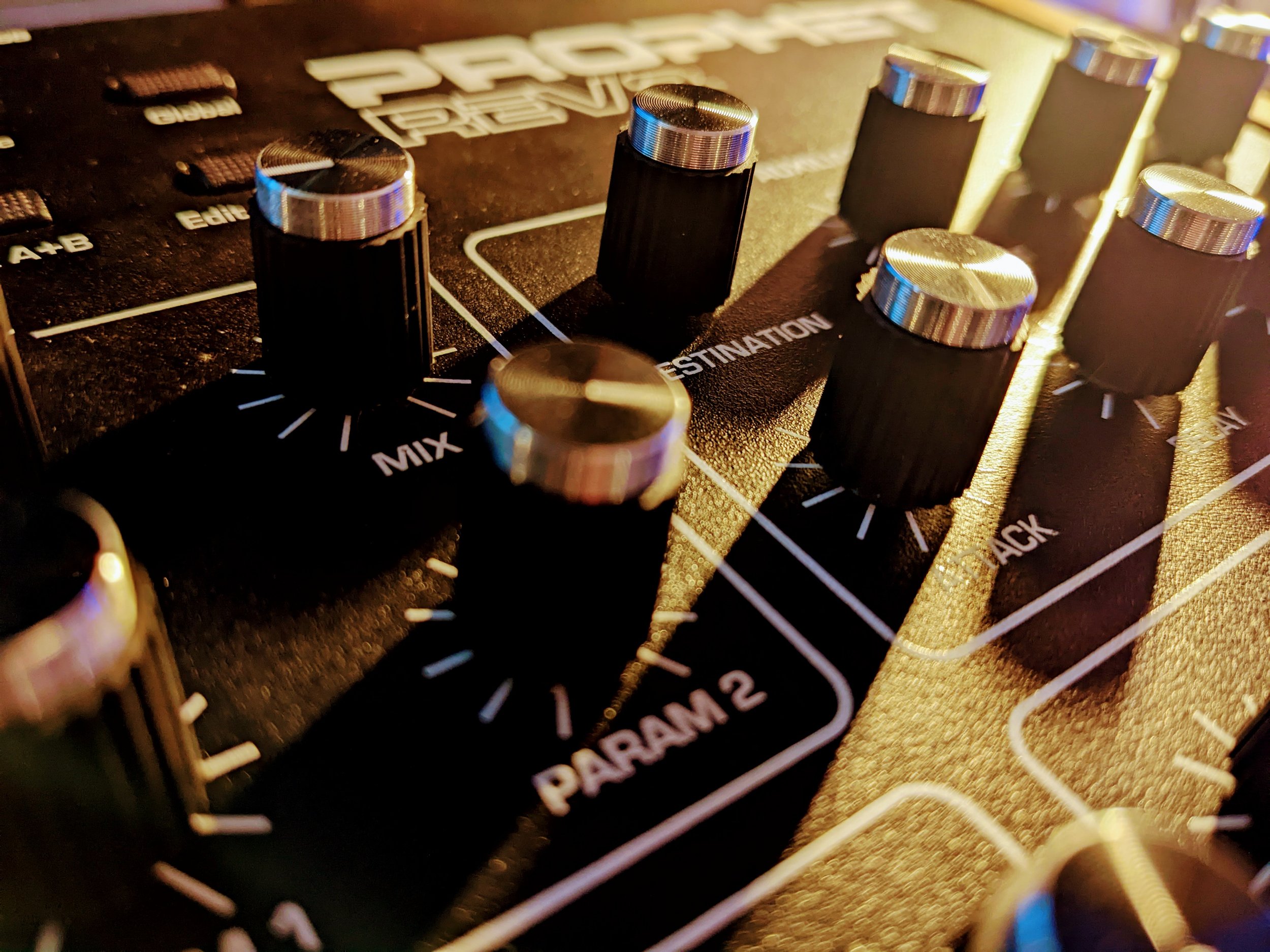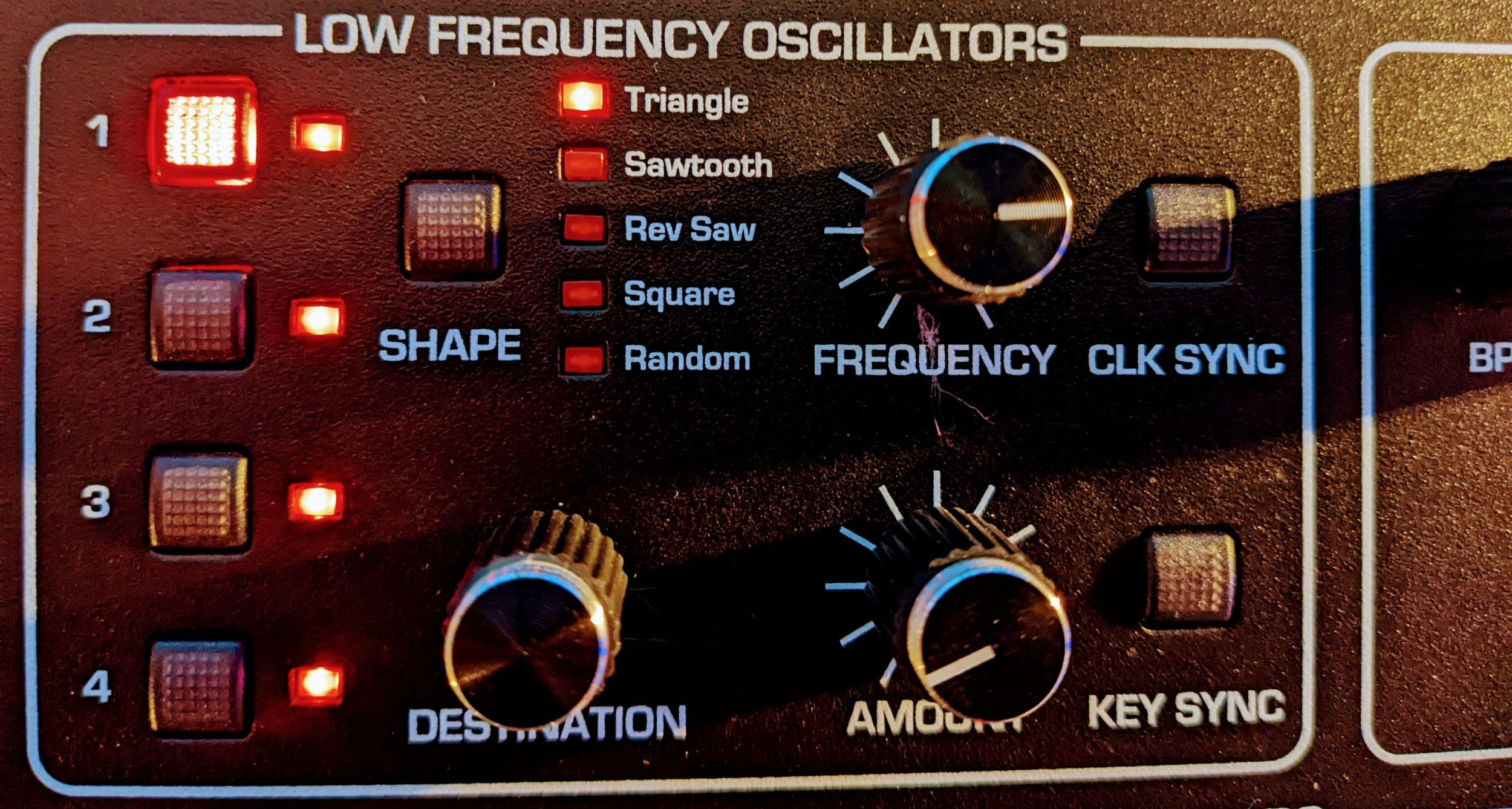Moog Sub37 Review 2025
Smooth. Fat. Overdriven. Powerful. Just a few words that get bandied about when talking about the Moog Sub 37. Released in 2014, it was one of their most feature-laden synths to-date. How does it hold up in 2025? Does it live up to the hype? Is it still worth getting now? Let’s dive in and find out.
OSCILLATORS
As is typical for post-millennium Moogs, the Sub37 comes with 2 standard oscillators with octave switches and fully-sweepable wave knobs, which can yield some extremely exciting possibilities. Alongside the 2 normal Oscs, it also sports a Sub oscillator (which is just a Square wave tuned 1 octave below Osc 1), and a Pink Noise generator.
The oscillators are brighter than the Slim Phatty, but not quite as aggressive as the Sub Phatty. They definitely sound more ‘modern’ than the Slim Phatty, and not quite as classically-Moogy as the Slim/Little Phatty or earlier Moogs.
Past the 7:00 position on the Mixer gain dials, the Oscillators start to overdrive, which can yield some pleasingly gnarly tones when combined with the Feedback and Multidrive, but can make creating smoother gentler sounds a bit more challenging. You have to be especially mindful of this when trying to use pure Sawtooth waves in your sounds, as pushing them too hard starts to clip them and turn them into Square waves. The headroom on the Oscs was expanded for the Subsequent37, so this section doesn’t apply to that model.
Like with the Sub Phatty, the Pink Noise generator is a nice extra, but would have been better-implemented as a White Noise generator, to make it easier to use in modern Techno and Trance and House sounds. The low end on the Pink Noise overwhelms sounds a bit too easily and interferes with tonal balance on uppper-register sounds.
What’s nice though, like with the Sub Phatty (and much easier to manipulate on the 37), is the ability to detune Osc 2 from Osc 1, with more granular controls for the detuning, via the Beat Freq knob, so you can achieve some nice Reese basses or detuned hard trance lead sounds.
The PWM on this is really nice, and being able to fully sweep the waves independently with each LFO yields some very cool sounds.
And one mode that is super nice, is Duo Mode. With that enabled, you can play paraphonic 2-note chords, which is a lot of fun.
FILTERS
That’s the other feature everyone is always most interested in when it comes to Moogs. And for this one, it yields some interesting surprises. The filter slopes are conveniently changeable from the front panel, so no obtuse button-diving like on the Sub Phatty.
And the maximum frequency cutoff for the Sub37 goes noticeably higher than on the Slim/Little Phatty, so it gets brighter and sharper than the older Moogs. That added brightness does pull away some of the attention from the saturated low-mids older Moogs were known for, but being a bit sharper and brighter here makes it much more useful in modern mixes.
Sizzling leads, snappy plucks, and gritty basses really shine on this synth, and the resonance can push sounds into some nice extreme territory.
Overall the filter still sweeps and behaves smoothly like a Moog filter should, albeit the higher cutoff makes sounds a bit brighter and harsher than they would be on an older Phatty. But using it in 4 pole filter slope mode mitigates that.
ENVELOPES
This is another area where the Sub37 pulls away from all its predecessors. At face value it looks like just a standard ADSR. But those 2 buttons, Delay and Hold, turn these Envelopes into DAHDSR, and can be set to be triggered, synced, and looped, opening up whole new worlds of sound sculpting possibilities.
The behavior is pretty standard otherwise.
LFO
Now things get really interesting. 2 LFOs that can be MIDI and clock synced? And with more routing options than other past Moogs? You better believe it. And they can go into Audio Rate territory, which is super cool.
MODULATION
What makes this really surpass the Sub Phatty that we reviewed earlier, is that there are independent Mod controls for Pitch and Filter, and for many other parameters, and the knobs are +/- at 12:00 as a starting point, so you can set negative values for different sweeps and modulations. LFO 2 works all the time any time, but LFO 1 is linked to the Modwheel. So you either need to keep the modwheel on the keyboard turned up all the time while using the front panel, or set the modwheel to Up while using the VST editor, and keep it up when saving the patches, if you want to modulate sounds with more complexity.
For added fun, hold the Mod 2 button and turn any knob, to automatically route Mod 2 to that parameter!
EFFECTS
Like with all the Moogs that came out before 2018, this is barebones on effects. One thing it does include that is super nice, are independent Feedback and Multidrive controls. Feedback is just a dedicated control implementation of the old Minimoog Model D trick of routing the audio output from the filter back into the mixer, which yields some crazy distortion when you start pushing it. And the Multidrive is nice for everything from gentle saturation to heavy crunchy distortion. You won’t find any other effects on this synth, but that’s not generally what folks get Moogs for in the first place.
End result can be anything from dark crunchy sounds to screaming wailing shrieks… and every flavor of gnarly 303 style Acid sounds in between.
CONCLUSION
At the end of all this, is the Sub37 still worthit in 2025?
I would say, yes. For the modern Trance/Psytrance/Chillout producer, this synth is much more versatile than the Little Phatty or Sub Phatty, and it can be as gentle or as aggressive as you want, with minimal effort.
Its tone might not suit someone on the hunt for a truly Classic Moog Sound, but for a modern analog duo/mono synth, this fares very nicely. The Subsequent37 adds a couple nice extras, including more headroom for the Oscillators at the Mixer stage, but that shouldn’t be a dealbreaker for you.
If you can find this for a good deal, you will enjoy this keyboard a lot.
























